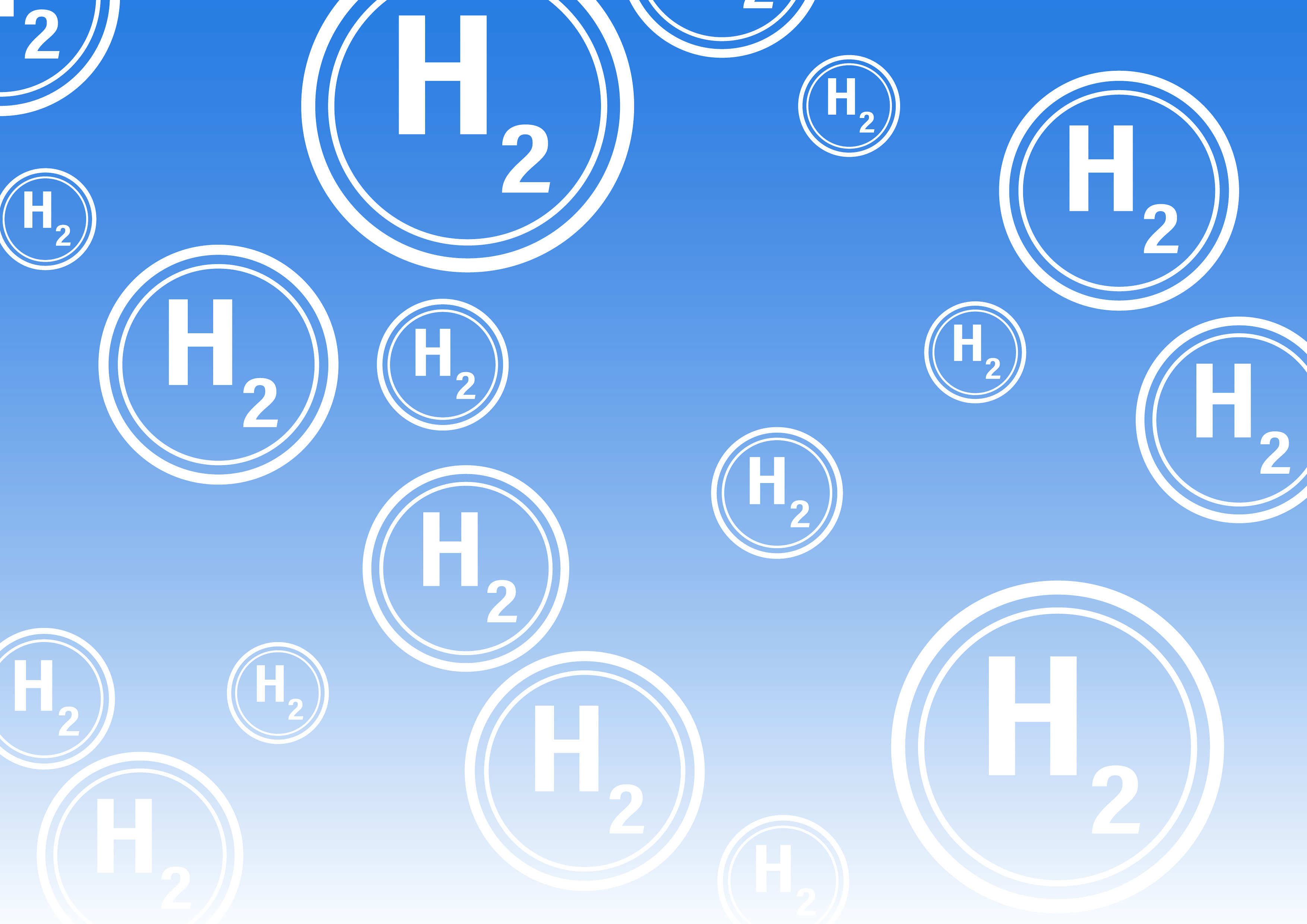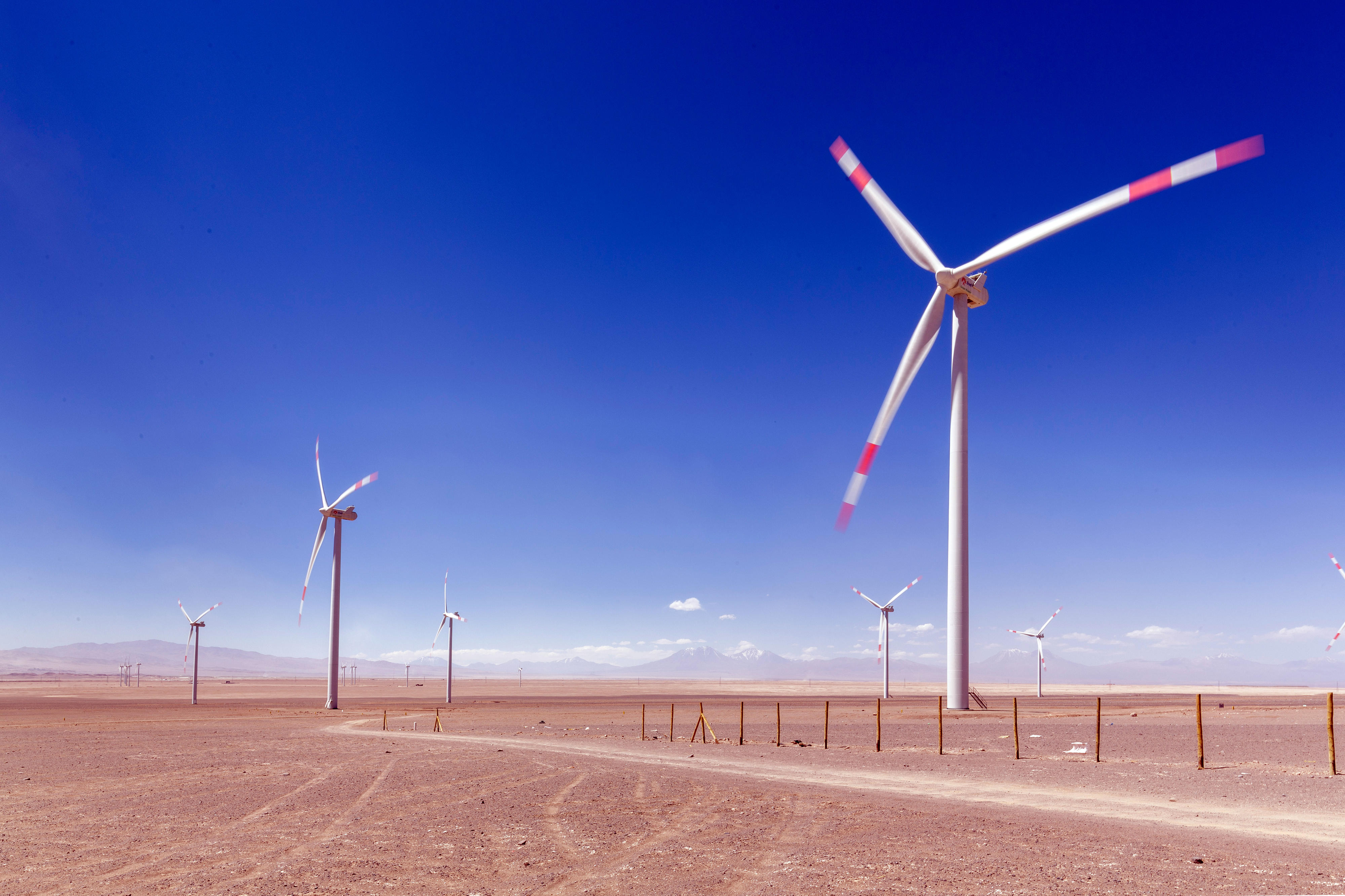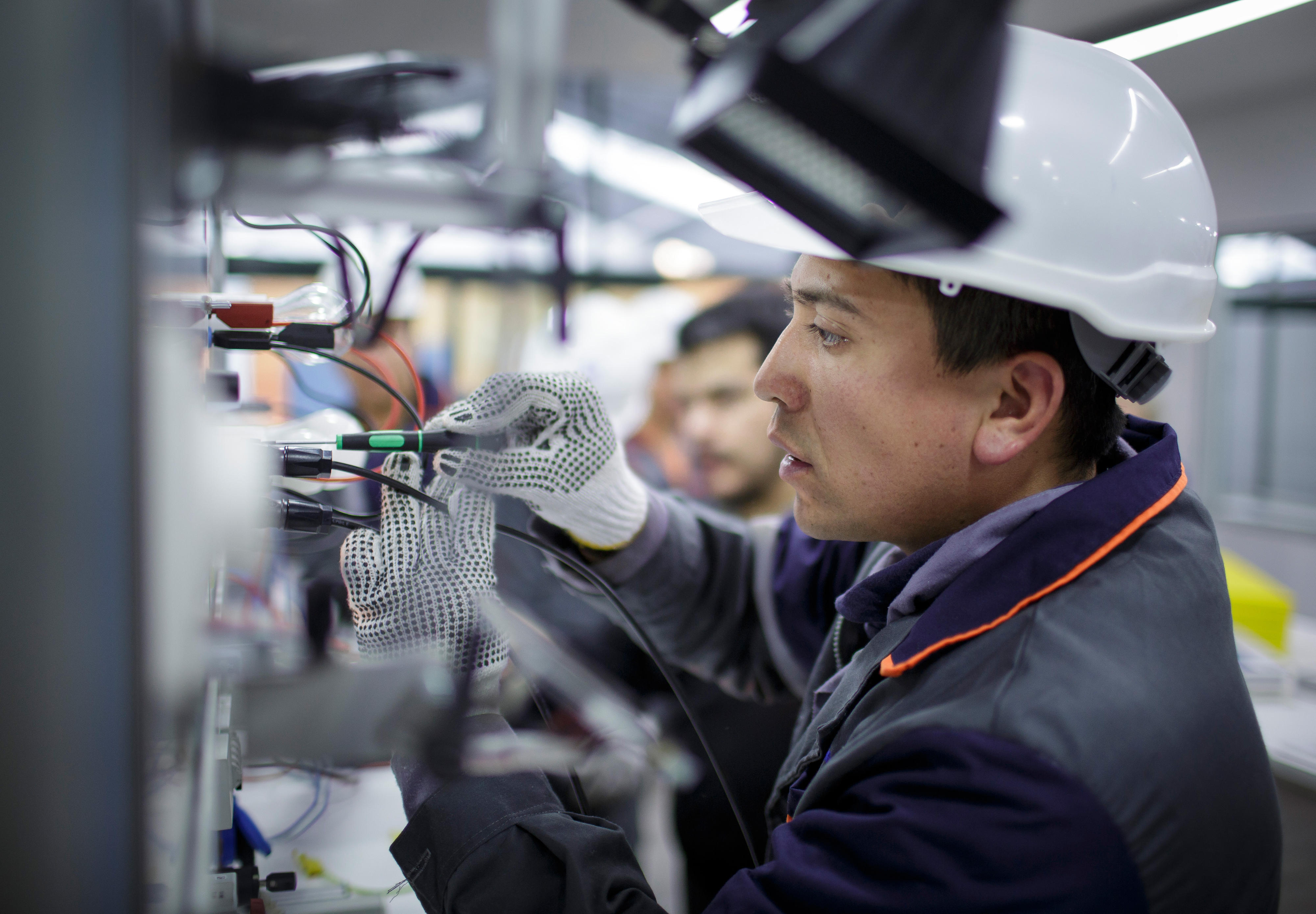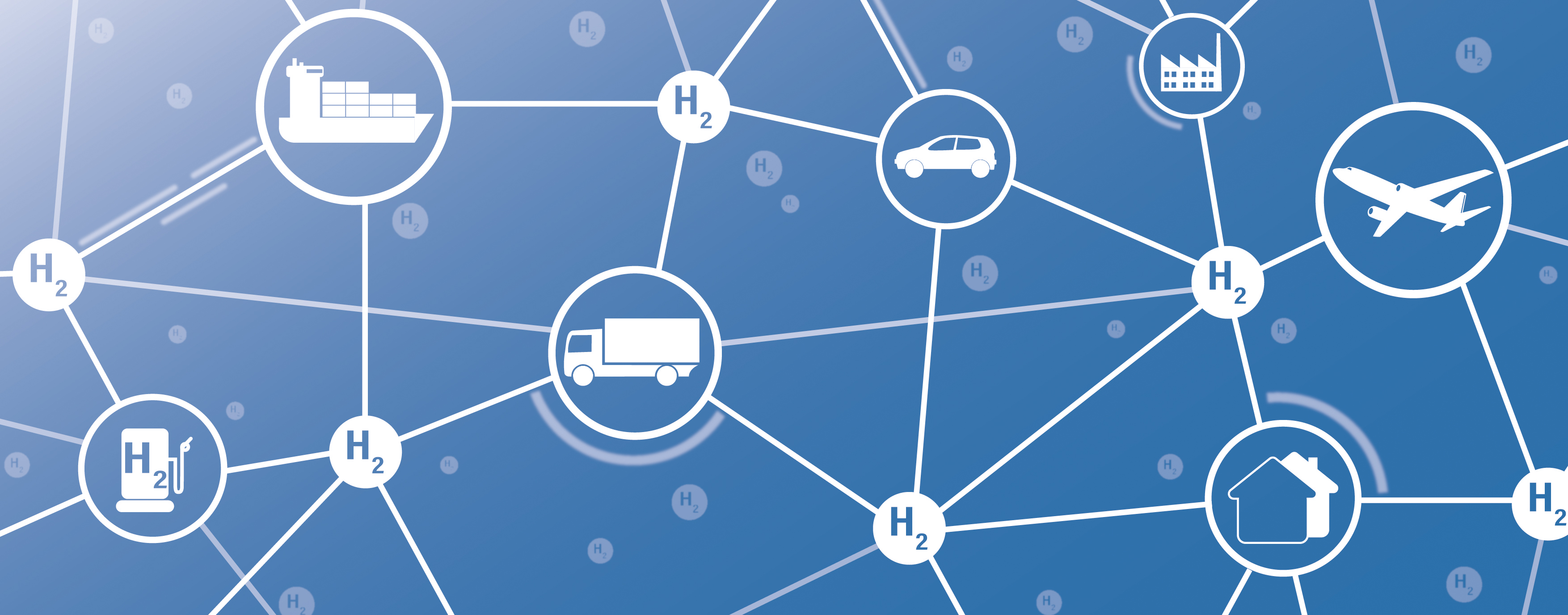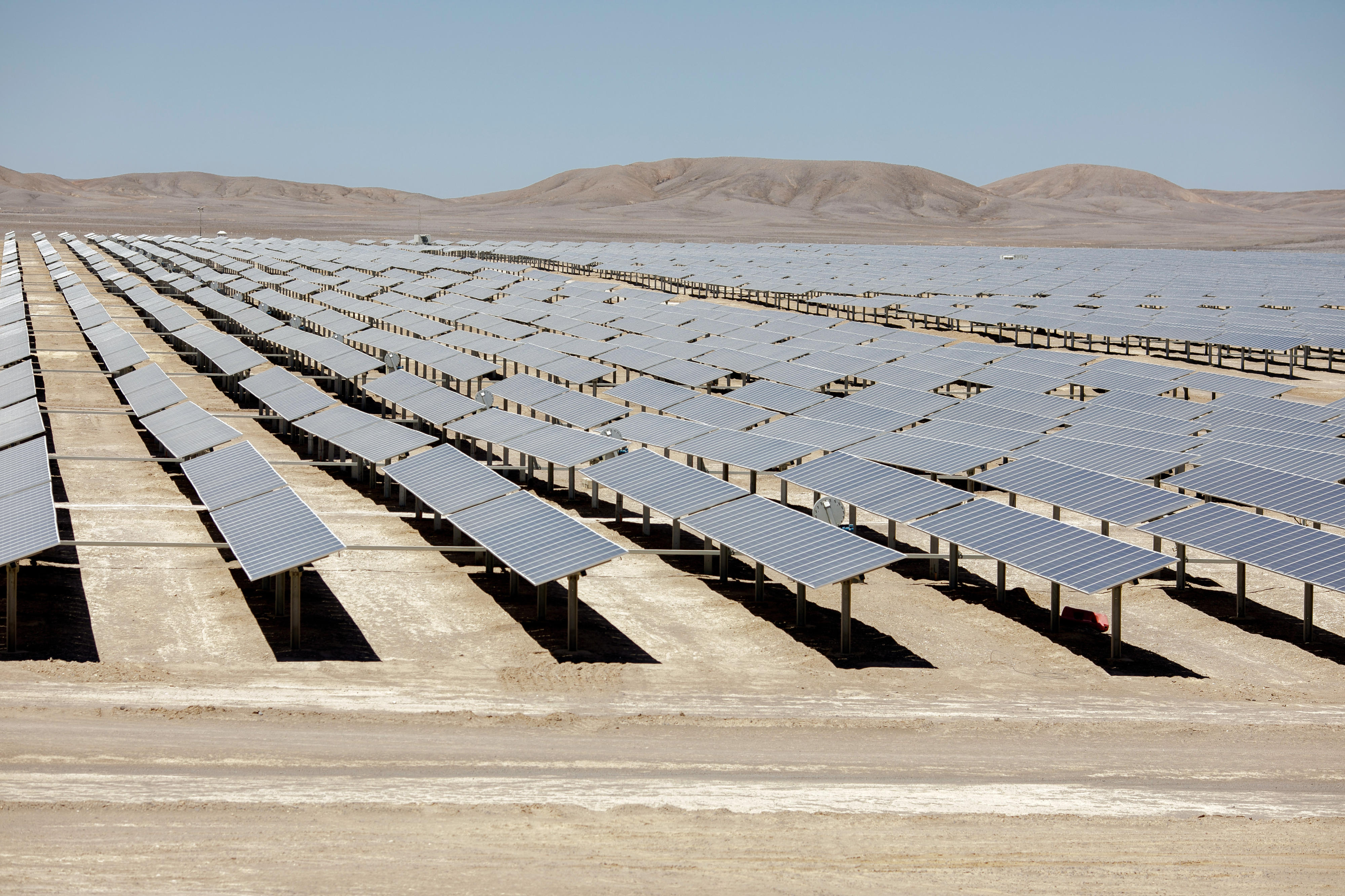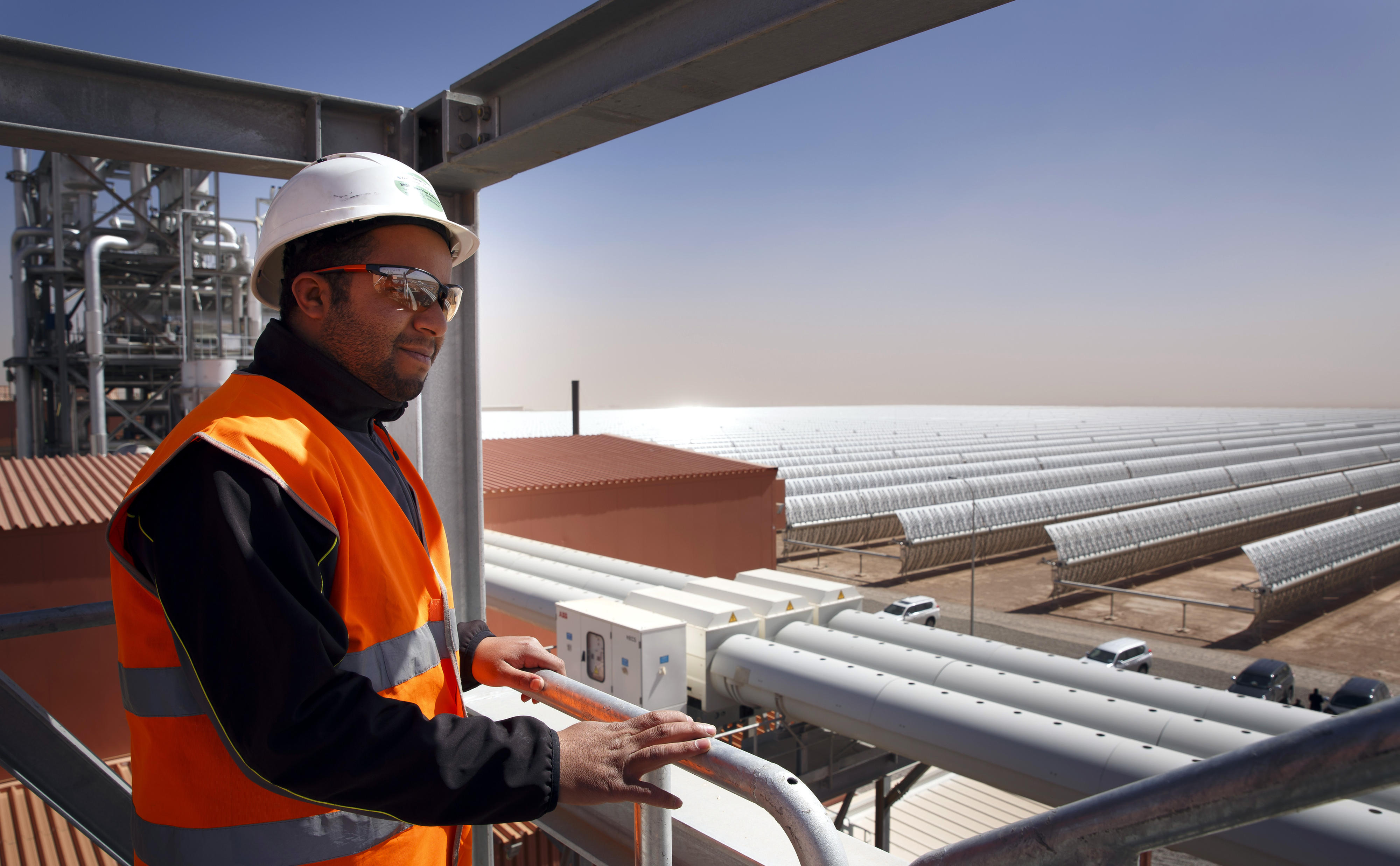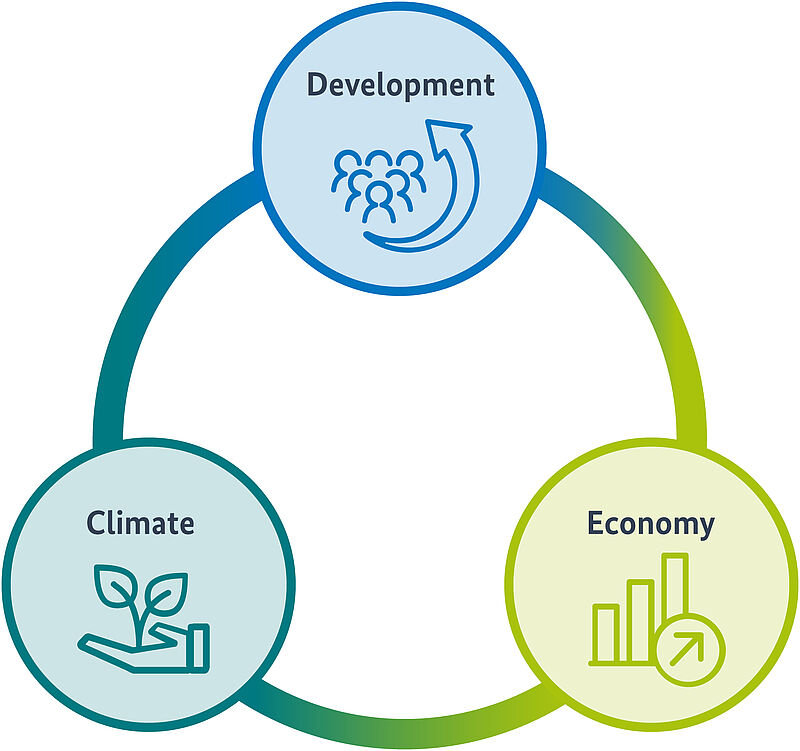Green hydrogen and Power-to-X products
Green hydrogen and Power-to-X products – how it works
Using a procedure known as electrolysis, water is split into oxygen and hydrogen. We talk about “green hydrogen” when the electricity used in that process has been generated in a climate-neutral way from renewable sources.
By adding carbon (for example carbon dioxide, CO₂), the green hydrogen produced in this way can then be turned, for example, into climate-neutral fuel gas (“power-to-gas”) or synthetic liquid fuel (“power-to-liquid”). This technology, known as “Power to X” (PtX), is regarded as a key element of an energy system based solely on renewable energy sources.
Green hydrogen and PtX products are a particularly useful option in contexts where it would be hard to use electricity, for instance in aviation and maritime shipping. The technology can also be applied in, for instance, the steel or chemicals industry.
Green hydrogen and PtX as an economic opportunity for the BMZ's partner countries
Manufacturing green hydrogen and PtX products requires massive amounts of electricity. Germany is unlikely to have the capacity to produce enough electricity from renewables to meet the future demand for climate-neutral fuels. So it will have to import PtX products on a large scale over the medium to long term.
Making such products offers countries in the Global South a broad range of opportunities for economic development. The green hydrogen sector leads to the development of local value chains, makes economies more crisis-resilient, and creates jobs. At the same time, it boosts energy security and helps countries to make the necessary transition towards a sustainable local energy supply.
That is why the Federal Ministry for Economic Cooperation and Development (BMZ) supports the generation of green hydrogen and the development of related industries in the partner countries with which it engages in development cooperation. It BMZ does not support hydrogen production from fossil energy.
A training class in the ProAndres training centre for the training as solar technician in Santiago de Chile
National Hydrogen Strategy – Germany pioneers green hydrogen
Another major challenge for PtX – in addition to sourcing sufficient renewable energy – is how to develop the market for such products. Improvements in technology and, in particular, the economies of scale brought by mass production can help to bring prices down dramatically, thus stimulating demand.
This also opens up opportunities for German enterprises. By building and operating “green refineries”, they can become pioneers of hydrogen technology. Through its National Hydrogen Strategy (External link), the German government wants to put Germany at the vanguard of green hydrogen and advance the use of climate-friendly hydrogen technologies. The purpose of the strategy is to foster the production of affordable climate-neutral hydrogen and to make Germany a global provider of state-of-the-art hydrogen technology.
Reference projects are to be launched in selected partner countries for the production of green hydrogen and PtX products in order to increase the market share of these products and support a social-ecological transformation on the ground.
Solar power plant in a desert
Development of a PtX supply – BMZ plans to support construction of a reference plant
Under the National Hydrogen Strategy, the BMZ has entered into an alliance with Morocco for the development of the Power-to-X sector. Morocco is one of the pioneers in the renewable energy sector in Africa. One of the world's biggest solar power plants has been built in Ouarzazate, with German support. It provides climate-friendly power for 1.3 million people.
The first stage of the partnership with Morocco is the building of Africa's first industrial-scale plant for green hydrogen and PtX derivatives. The two sides are planning to establish some 100 megawatts in electrolysis capacity. The aim is to show that competitive green hydrogen and/or PtX products can indeed be generated in the partner countries of German development cooperation.
In this project, the BMZ attaches top priority to ensuring that the energy and water resources required are used sustainably. Every effort is being made to ensure the production plant is not competing with the local community for use of these resources. This is done by expanding the supply of sustainable energy, identifying and developing sustainable sources of water, and offering training.
PtX Platform
The German government and the KfW Group have created a platform that brings together all their available instruments for supporting and financing PtX projects.
The aim is to support capital-intensive PtX projects that cannot yet find full financing, particularly in developing countries and emerging economies. The platform provides a way of closing those financing gaps. KfW coordinates the platform; it provides advice, puts together financing packages and offers assistance in the process of project implementation.
Projects at all stages of the PtX value chain can be supported, from generation of green power using renewable sources through to the manufacture and transportation of green hydrogen and other products. These “derivatives” include substances like methane, methanol and ammonia, which are used in particular in heavy industry, aviation and shipping, and as raw materials for the chemical sector.
The BMZ’s PtX Development Fund (External link) is the core element of the platform. The aim of the Fund is to create local value chains in developing and emerging economies and to support the use of hydrogen and its derivatives. This will open up these countries’ access to the technology of the future. In this way, the Fund contributes to the “just transition”, the transformation of the economy in a socially and ecologically sound way that is also equitable.
Other ministries and their activities
The German ministries, each working within their own remit, have joined together to help develop PtX products. The aim is to make them commercially viable as quickly as possible. Initiatives that focus on supply are being coordinated by the BMZ (production of green hydrogen in development cooperation partner countries); those that are concerned with the demand side (developing the market for PtX products in Germany) are mainly being led by the Federal Ministry for Economic Affairs and Climate Action (BMWK), the Federal Ministry for Digital and Transport (BMDV) and the Federal Ministry for the Environment, Nature Conservation, Nuclear Safety and Consumer Protection (BMUV). In addition, the Federal Ministry of Education and Research (BMBF) is funding pilot plants and living labs in Germany for research and demonstration purposes, thus fostering peer-to-peer learning in an experimental environment.
Contact
As at: 14/05/2024
